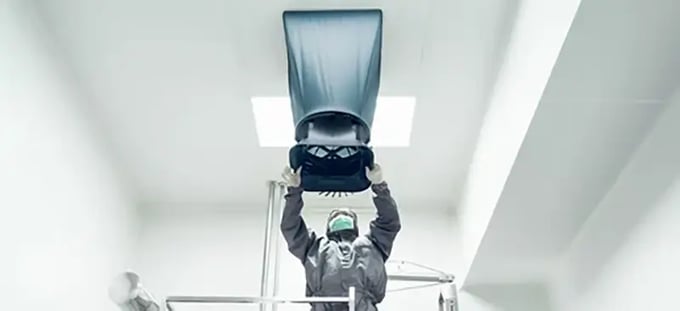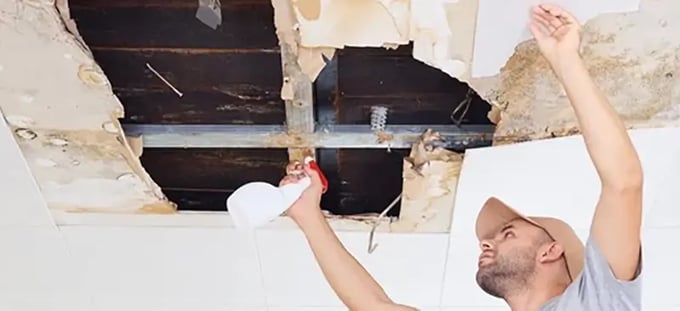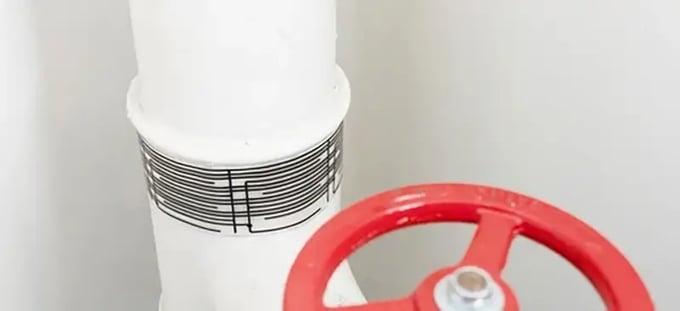While water leaks are commonplace in any building, they are always a much more severe problem when they happen in medical facilities.
Leaks in medical spaces frequently don’t only result in property damage but in lives lost and worse healthcare outcomes. A water leak introduces moisture and is a vehicle for all kinds of deadly diseases and illnesses; a situation made all the more acute by having a concentration of sick and immune-compromised individuals.
We’re examining why this is such a serious issue and why smart leak detection – and the general benefits of the Internet of Things (IoT), and how this technology can serve a critical role in protecting these spaces and the lives of the people in them.

Why water leak detection is so important in medical facilities
While tap water in most developed countries meets high safety standards, it is far from sterile. Most clean tap water is teeming with bacteria that otherwise are harmless to us normally but become a threat to the seriously ill and injured. Furthermore, water leaks, notably sewage, allow much more deadly, drug-resistant bacteria and viruses to thrive, such as cryptosporidium, giardia, and legionella.
A water leak, especially hidden or unnoticed for a long time, is a powerful catalyst for fungal and bacterial growth, starting in as little as a day. Additionally, these leaks increase moisture levels in spaces where control of the humidity and air quality control is critical.
Failure to detect or immediately respond to sewage leaks in a hospital is almost guaranteed to result in patient death. This has predictably costly consequences, no matter where it happens. Even without a leak, sewage entry points – drains, toilets and similar – are a potential breeding ground for pathogens.
Healthcare institutions also tend to use a relatively large amount of water. To put this in perspective, while the average person in the UK uses around 142 liters (37.5 gallons) of water per day, a UK hospital in-patient represents a hospital using as much as 450 liters (119 gallons) per day. This includes water for cooling, plumbing and similar uses to other large facilities, but also the considerable amount of water used for washing medical tools and equipment and extensive laundry facilities for medical wear.
This also includes not just the water supply and sewage of your facility but also ways that unwanted water can get in. For example, failed or improperly installed sealants and barriers in windows, walls and roofs, as well as heating and cooling systems, become vectors for water leaks. These leaks can be hard to discover and find the source of before they cause considerable damage. As you might imagine, these are ideal for mold growth in the building materials, severely affecting air quality with dangerous black mold and aspergillus.

How to protect medical facilities with the Internet of Things
Hospital facility managers can benefit from employing the Internet of Things to guard against sudden or unexpected links anywhere within the building. Technology is now available that it is possible to monitor even a large hospital using a network of sensors that can give you real-time information about where and how water is used without needing to manually inspect fixtures and fittings.
IoT systems can also assist in improving the overall water efficiency of a hospital or clinic. For example, smart water metering and flow sensors can provide the data you need to see where water is most used and establish benchmarks when creating efficiency goals or a water management program for a facility.
Sensors like this can also be installed in every space we’ve covered: plumbing fixtures and fittings, sewage drains and HVAC systems, and within your facility’s structure and building materials.
Beyond water leak detection, there are additional IoT tools you can use to assist with other elements of your facility’s management. This might include monitoring for water pressure drops, air humidity, and chemical and water quality levels, such as chlorine in water or disinfectants.

Make your facility safe with our smart leak detection system
The sensors and software we make at LAIIER are designed to alert you when even a tiny leak has started and help you predict where leaks are likely to occur.
Our sensors are particularly effective around hospitals and clinics’ complex plumbing and water supply systems. Our printed sensors are made with special adhesives that fit around pipes, drains, and fittings, where leaks often occur but are often hard to reach or see.
If you’re interested in discovering if we could be the right smart tech choice for your medical facility, check out our first complete detection system, Severn Water Leak Detection, and book a demo today.